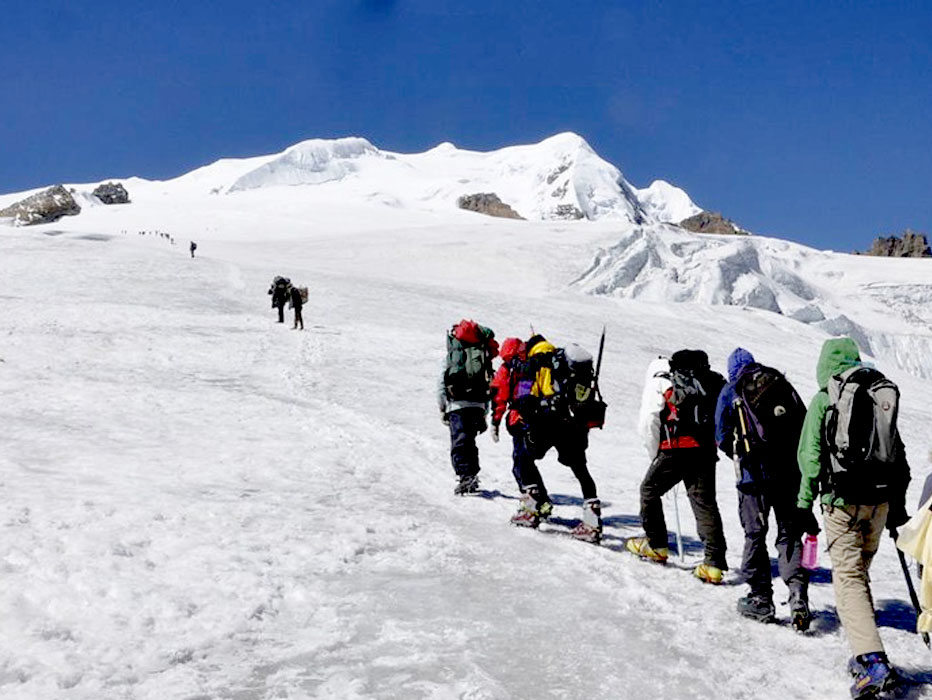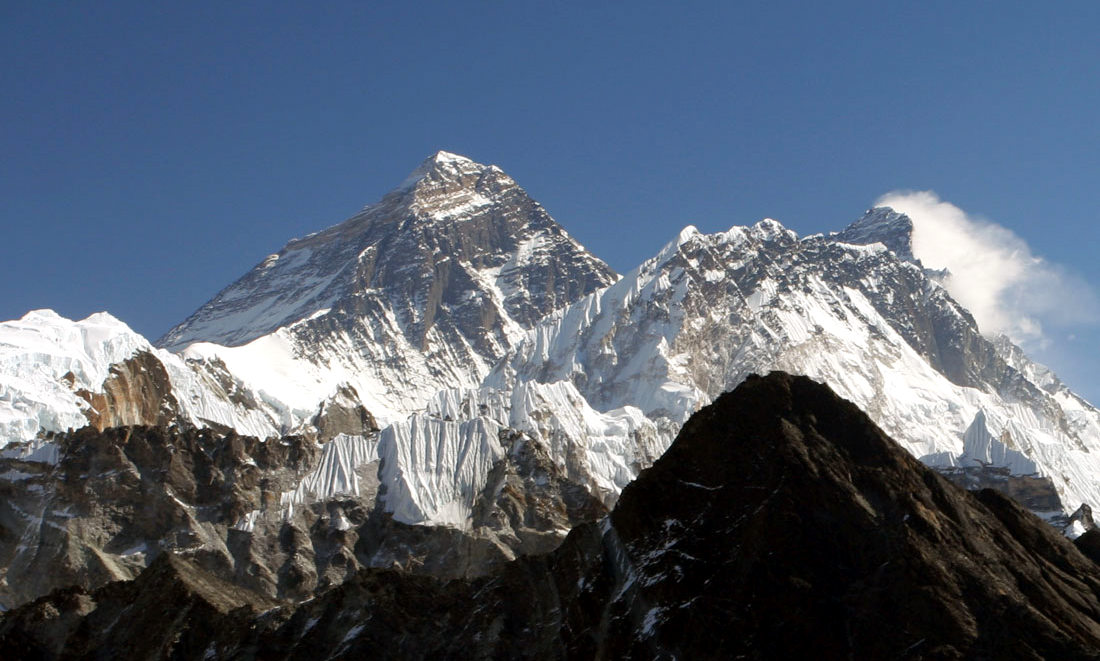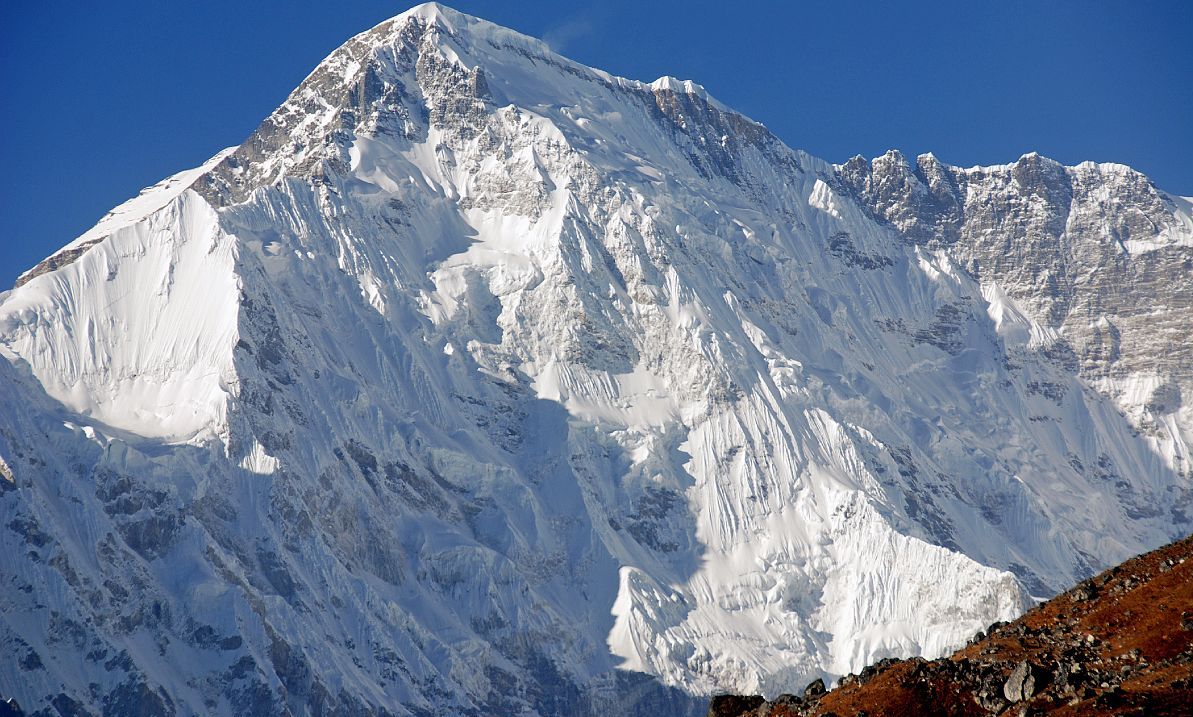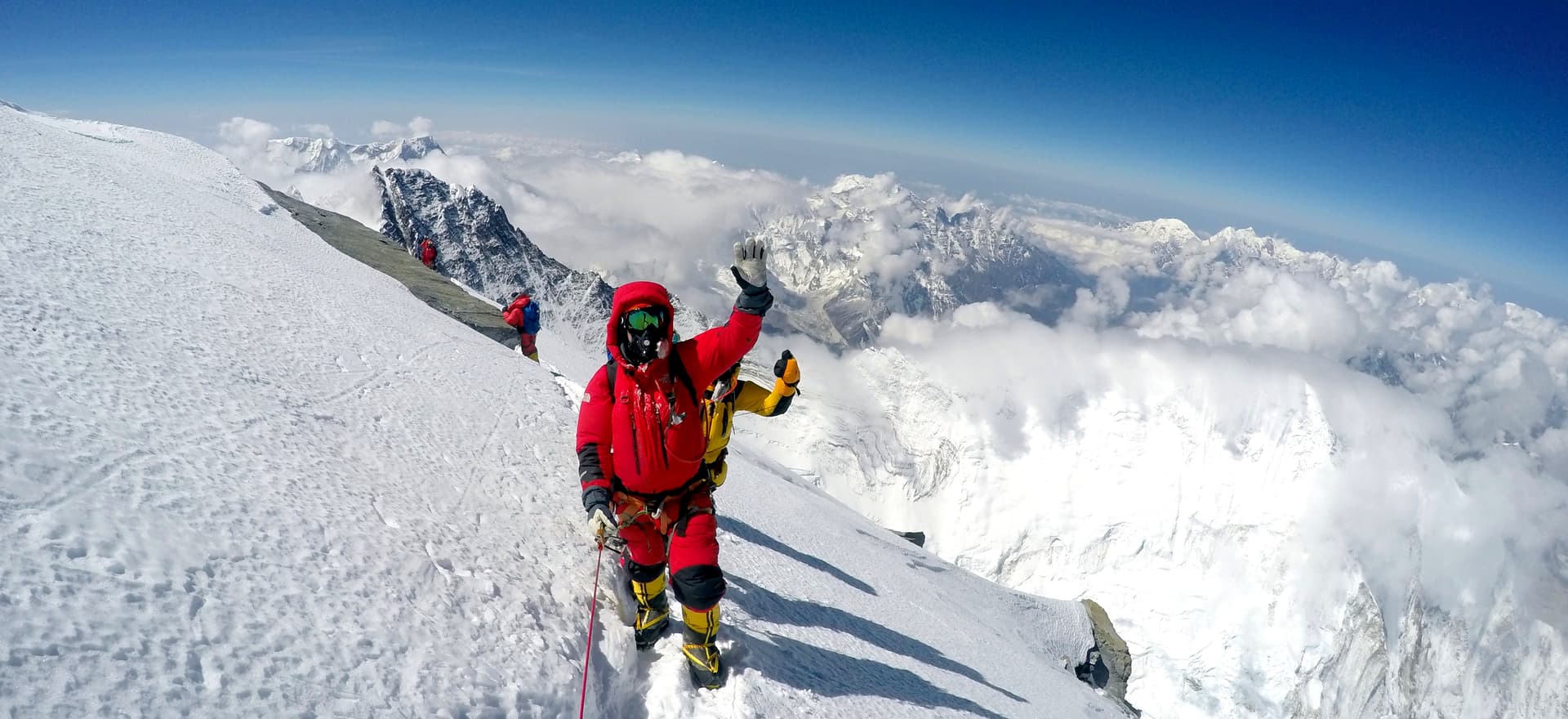A Complete Guide for Climbing and Expedition in Nepal
Climbing has been a great part of the land of the Himalayas, Nepal. The land geography of Nepal is different from the rest of the world which makes climbing an adventurous sport. Climbing is definitely an art of challenging weather, temperature, daylight, and different circumstances. The best way of understanding climbing is to measure your ability to overcome different hurdles coming your way and overcome them to submit them. Climbing isn’t as easy to do, it requires a lot of strength, increasing your power endurance, and improving technique. Climbing gives you a joyful experience in the Himalayas.

Nepal holds 8 out of the 14 highest peaks in the world, which is astonishing in itself. There are multiple regions in the Himalayas that you can choose to conquer depending on your abilities. Often challenging people who are ready to overcome that can have real experience of adventure, being at the peak of majestic mountains. The history of climbing goes way back to the 1950s when Annapurna I was the first peak conquered above 8000m, the most famous peak conquered is the summit by Sir Edmund Hilary and Tenzing Norgay Sherpa in 1953. More than 400 mountain peaks are permitted for international climbing and trekking enthusiasts.
Tips for Climbing and Expedition in Nepal
- Obtain necessary permits: Climbing peaks in Nepal require permits from the Nepalese government. Make sure to obtain the appropriate permits for the specific peak you plan to climb, as well as any other necessary permits for the region or national park you will be entering.
- Hire an experienced guide and team: Climbing in Nepal can be challenging and requires technical skills. Our experienced guide and a team of Sherpas can greatly enhance your safety and chances of success. Look for certified guides who have experience in organizing expeditions in Nepal.
- Acclimatize properly: Climbing at high altitudes requires proper acclimatization to avoid altitude sickness. Take the time to acclimate gradually by ascending slowly, staying hydrated, and listening to your body. Plan for rest days to allow your body to adjust to the altitude.
- Pack appropriately: Be sure to pack all the necessary gear and clothing for your climbing expedition, including warm clothing, high-quality mountaineering equipment, food, and other essentials. Be prepared for extreme weather conditions and have a contingency plan in case of emergencies.
- Follow Leave No Trace principles: Nepal's mountains are pristine environments, and it's important to minimize your impact. Follow the Leave No Trace principles, pack out all trash, and respect local customs and cultures.
- Stay informed about weather conditions: Weather in the mountains can change rapidly, and it's crucial to stay informed about the weather forecast. Be prepared for sudden changes in weather and adjust your plans accordingly.
- Train and prepare physically: Climbing in Nepal can be physically demanding. Train and prepare yourself physically and mentally for the challenges of high-altitude climbing. Consult with a fitness professional and develop a training plan that includes cardiovascular exercise, strength training, and endurance training.
- Have a backup plan: Climbing expeditions can be unpredictable, and it's important to have a backup plan in case of unforeseen circumstances such as weather changes, route closures, or health issues. Be flexible and prepared to adapt your plans accordingly.
- Purchase adequate insurance: Make sure to purchase comprehensive travel and medical insurance that covers high-altitude climbing and emergency evacuations. It's essential to have coverage in case of accidents or emergencies during your expedition.
- Respect local culture and customs: Nepal has a rich cultural heritage, and it's important to respect the local culture and customs while on your climbing expedition. Learn about local customs, dress appropriately, and be respectful to the local people and their traditions.
Note: Climbing in Nepal can be physically and mentally challenging, and safety should always be a top priority. Proper planning, preparation, and experienced guidance are key to a successful and safe climbing expedition in Nepal.
Though peaks of different elevations are situated at the heart of the Himalayas range some of the astoundingly beautiful and adventurous mountains that are permitted for national and international foreigners are:
8000m’s peaks in Nepal
- Everest(8848 m),
- Kanchenjunga (8586m),
- Annapurna (8091m),
- Lhotse (8516),
- Dhaulagiri (8,167 m)
- Makalu (8463m)
7000m’s Peaks in Nepal
- Himlung Himal Peak (7126m/23,379ft)
- Putha Hiunchuli Peak (7246m/23,772ft)
- Lhakpa Ri Peak (7045m/23,00ft),
- Everest Camp II North(5334m/17,500ft) ,
- Churen Himal Peak (7385m/24,229ft)
- Baruntse Peak (7129m/23,389ft)
- Tilicho Peak (7134m/23,405ft)
- Tukuche Peak (6920m/22,703ft)
6000m’s Peaks in Nepal
- Ama Dablam(6812)
- Mera peak(6476m)
- Island peak(6160m)
- Singu Chuli Peak (6,501 m)
- Pisang Peak (6,091 m)
- Chulu West Peak (6,429 m)
- Kusum Kanguru (6,367 m)
- Dhampus Peak (6012 m)
- Lobuche Peak (6,145 m)
The climbing isn’t just about reaching the summit but a collective experience of culture and religion, experiences in the dense forests, exploration of flora and fauna, Temples and Monasteries, the joy of snow, natural diversity and wilderness, historical sculptures and monuments, traditional and cultural Sherpa villages and settlements. Nepal has been a top destination for those wanting to be a bystander on the lap of the Himalayas. The Himalayas have a tremendous amount of adventure, magic on the luring peaks, silence, and calmness in the dense forest conserved in the national park.
Best Season for Climbing and Expeditions in Nepal
Nepal offers a diverse climatic range that caters to various outdoor activities throughout the year. When it comes to climbing and expeditions, certain seasons are more favorable due to weather conditions, visibility, and accessibility. Here's a breakdown of the best seasons for such adventures:
Spring (March to May)
- Overview: Spring is often regarded as the best season for climbing and mountaineering in Nepal. The weather is moderate, and the mountain views are clear.
- Temperature: Mild temperatures at higher altitudes, with warmer conditions in the lower regions.
- Visibility: Excellent mountain views with clear skies, especially during April.
- Advantages: Rhododendron and other alpine flowers are in full bloom, adding to the scenic beauty. Popular for climbing major peaks, including Mt. Everest.
- Considerations: It's peak season, so trails can be crowded, and expedition base camps can get busy.
Autumn (September to November)
- Overview: Another prime time for expeditions, autumn offers stable weather conditions post the monsoons.
- Temperature: Gradually cooling as winter approaches, but remains favorable for climbs.
- Visibility: Clear and crisp mountain views, especially in October.
- Advantages: The landscapes are lush and green after the monsoon rains. It's an ideal time for high-altitude treks and major expeditions.
- Considerations: Like spring, this season also sees a surge in the number of trekkers and mountaineers.

Winter (December to February)
- Overview: Winter brings cold temperatures, especially in the higher altitudes, making it less popular for major expeditions. However, it can be suitable for lower-altitude treks.
- Temperature: Cold, with snowfall in higher elevations.
- Visibility: Clear views, but shorter daylight hours.
- Advantages: Fewer crowds on the trails and a serene, snow-covered landscape.
- Considerations: Extreme cold at high altitudes can be challenging, and some passes may be closed due to snow.
Summer/Monsoon (June to August)
- Overview: Summer in Nepal coincides with the monsoon season. It's less popular for climbing due to wet conditions, but certain rain-shadow areas can still be trekked.
- Temperature: Warm and humid.
- Visibility: Reduced due to frequent rain and cloud cover.
- Advantages: Rain-shadow areas like Upper Mustang and Dolpo remain accessible and offer a unique monsoon trekking experience.
- Considerations: Increased risk of landslides in certain areas, leeches on the trails, and flight delays or cancellations are common due to weather conditions.
While Spring and Autumn stand out as the premier seasons for climbing and expeditions in Nepal, each season has its unique offerings. Your choice should align with your preferences, desired experience, and the level of challenge you're willing to undertake.
Best 8000 m’s peak for climbing and expedition
The alluring charm of the world's 8000m peaks has always enticed mountaineers from every corner of the globe. Conquering any of these giants is a remarkable achievement, with each peak presenting its unique set of challenges. While Mt. Everest is undeniably the most recognized due to its title as the tallest, several other peaks offer technical difficulties and thrilling climbing experiences. Here's a brief overview of some of the best 8000m peaks to consider for an expedition:
Mt. Everest (8,848m)
- Location: Nepal/Tibet
- Fame: The tallest mountain in the world.
- Climbing Challenge: While commercialization has made Everest more accessible, it still poses significant risks including the infamous Khumbu Icefall.
Annapurna I (8,091m)
- Location: Nepal
- Fame: Considered one of the most dangerous for climbers.
- Climbing Challenge: Extremely avalanche-prone, with a fatality rate that's historically been very high.
Lhotse (8,516m)
- Location: Nepal/Tibet
- Fame: The fourth highest mountain in the world, known for its proximity to Everest.
- Climbing Challenge: The Lhotse Face is a sheer wall of ice that presents technical challenges and risks.
Kanchenjunga (8,586m)
- Location: Nepal/India
- Fame: The third highest peak in the world.
- Climbing Challenge: Remote and less frequented, it has a myriad of challenges including steep sections and the risk of avalanches.
Makalu (8,485m)
- Location: Nepal/Tibet
- Fame: Known for its iconic pyramid shape.
- Climbing Challenge: Technical difficulties with sharp ridges and steep pitches.

Climbing any of these giants is not just a physical challenge but also a mental battle. Proper acclimatization, a robust support team, and impeccable planning are essential for a successful summit attempt. Also, the value of respecting the mountains and understanding the associated risks cannot be understated. Whether it's the allure of standing atop the world on Everest or facing the formidable challenges of Annapurna, each peak offers a unique story for climbers willing to take on the adventure.
Gears and Equipment for climbing and expedition
Embarking on a climbing expedition, especially to the world's highest peaks, necessitates meticulous preparation and the right equipment. Proper gear is crucial not only for the success of the expedition but also for the safety and well-being of the climber. Below is a comprehensive list of essential gears and equipment for high-altitude mountaineering and expeditions:
Clothing
- Base Layers: Moisture-wicking thermal tops and bottoms.
- Mid Layers: Fleece or soft-shell jacket and pants.
- Insulated Jacket: Down or synthetic fill for extreme cold.
- Hardshell Jacket & Pants: Waterproof and windproof.
- Down Suit: For extremely high altitudes.
- Trekking Clothes: Lighter wear for lower altitudes.
- Gaiters: For snow and moisture protection.
Footwear
- Mountaineering Boots: Insulated, high-altitude boots.
- Trekking Boots: For the trekking portion of the expedition.
- Crampons: Metal spikes attached to boots for ice and hard snow.
- Climbing Socks: Wool or synthetic, moisture-wicking.
Climbing Equipment
- Ice Axe: Crucial for ascent and descent on icy terrains.
- Harness: With adjustable leg loops.
- Carabiners: Both locking and non-locking.
- Belay Device: For rope management.
- Prusik Loops & Slings: For rescue, pulley systems, and rope ascension.
- Rope: Dynamic and static ropes.
- Snow Stakes & Ice Screws: For anchoring.
Headgear
- Climbing Helmet: Protection from falling ice and rock.
- Sunglasses: UV protection for high altitudes.
- Ski Goggles: Protects from snow blindness.
- Headlamp: With extra batteries.
Hand Gear
- Inner Gloves: Thin, moisture-wicking.
- Insulated Gloves: For higher altitudes.
- Shell Gloves: Waterproof and windproof.
Camping & Sleeping
- Four Season Tent: Designed for high winds and heavy snow.
- Sleeping Bag: Rated for extreme cold temperatures.
- Sleeping Pad: Insulated pad for under the sleeping bag.
- Stove & Fuel: High-altitude stoves.
- Cookware: Lightweight and durable.
Personal Items & Accessories
- Backpack & Duffel Bag: For carrying gear.
- Trekking Poles: For stability.
- Water Bottles & Thermos: Insulated to prevent freezing.
- Sunscreen & Lip Balm: High SPF.
- First Aid Kit & Personal Medications: Including altitude sickness medicine.
- Navigation: Compass, altimeter, GPS.
- Communication Devices: Satellite phone, radio.
Miscellaneous
- Glacier Glasses: Protect eyes from the intense sun at altitude.
- Crevasse Rescue Kit: Including pulleys and ascenders.
- Repair Kit: For gear repairs.
- Portable Oxygen: For high altitude expeditions.
- Solar Charger & Batteries: To keep electronic devices charged.
Remember that the specific gear required may vary depending on the nature of the expedition, the peak being climbed, and the expected conditions. Always consult with experienced climbers or guiding companies when assembling your gear list. Ensure that all equipment is checked, and in good condition, and that you're familiar with its use before embarking on the expedition.
Luxury Holidays Nepal has some elite peak climbing plans with attractive offers and bonuses. Island Peak Expedition, Lobuche East Peak Climbing with Everest Base Camp, Mera Peak Climbing, Mt Everest Expedition, Chulu West Peak Climbing, Island Peak Climbing with Everest Base Camp Trek, etc. are our most popular and most chosen peaks to Climb.
Climbing and expeditions in Nepal offer an unparalleled adventure that combines physical challenges, breathtaking landscapes, and rich cultural experiences. Whether you're ascending the world-renowned peaks of Everest or Annapurna, or exploring lesser-known gems, the key to a successful and enjoyable journey lies in thorough preparation, understanding of local customs, and respect for the natural environment. With the right training, equipment, and guidance, adventurers can safely navigate the majestic Himalayas, creating memories that will last a lifetime. By prioritizing safety, environmental responsibility, and cultural sensitivity, climbers and trekkers can ensure their expedition not only respects the delicate balance of this extraordinary region but also enriches their lives with its profound beauty and resilience.
FAQs: A Complete Guide for Climbing and Expedition in Nepal
Q: Do I need previous climbing experience to trek in Nepal?
A: Not for all treks. Many popular treks like the Everest Base Camp or the Annapurna Circuit do not require previous climbing experience. However, for technical climbs and higher peaks, prior experience is essential.
Q: What is the best time of year to go trekking or climbing in Nepal?
A: The best times are during the pre-monsoon spring season (March to May) and the post-monsoon autumn season (September to November). These periods offer the clearest skies and the most stable weather conditions.
Q: How do I prevent altitude sickness?
A: Acclimatization is key. Plan your itinerary with enough days to adapt to higher elevations, stay hydrated, and ascend slowly. Recognize the symptoms of altitude sickness early, and do not ascend further if symptoms develop.
Q: Are guides and porters necessary?
A: While some experienced trekkers do trek independently, our professional guide and/or porters can enhance your experience by providing local knowledge, logistical support, and additional safety. For technical climbs, guides are essential.
Q: What permits do I need for trekking and climbing in Nepal?
A: You will typically need a TIMS card for trekking, plus a national park entry fee for specific areas. For climbing, permits from the Nepal Mountaineering Association or the Department of Tourism are required, depending on the peak.
Q: What gear do I need?
A: Essential gear includes proper footwear, thermal and waterproof clothing, a sleeping bag suitable for high altitudes, a first aid kit, and for technical climbs, specialized equipment such as ropes, harnesses, crampons, and ice axes.
Q: Can I rent equipment in Nepal?
A: Yes, in cities like Kathmandu and Pokhara, you can rent or buy most of the equipment you'll need. It's advisable to bring your own boots and some personal gear that fits well.
Q: What about travel insurance?
A: Make sure your insurance covers high-altitude trekking and climbing, emergency evacuation, and medical expenses. Check the maximum altitude covered by your policy.
Q: How do I deal with waste during my trek?
A: Practice "Leave No Trace" principles. Carry out all your trash, use biodegradable soap, and avoid single-use plastics. Some areas have waste management systems in place, but it's best to minimize your waste.
Q: Can I charge electronic devices during my trek?
A: Many teahouses and lodges offer charging for a small fee. However, electricity may be unreliable or unavailable in remote areas. Consider bringing a solar charger or extra batteries.
Q: How do I respect local cultures and traditions?
A: Dress modestly, ask permission before taking photos of people, learn a few phrases in the local language, and always show respect for local customs and religious sites.
If you need any further information, please contact us by email: [email protected], Phone: +977- 985 100 5129 (WhatsApp)
#Tags
Tripadvisor
5.0928 reviewsGoogle
4.8114 reviewsFacebook
4.1 recommend44 ReviewsTrustpilot
4.1 Great(5 reviews)- Trusted by50K plus traveller




